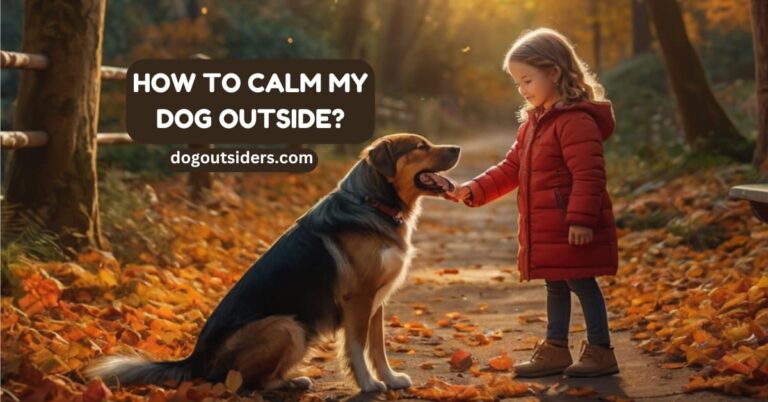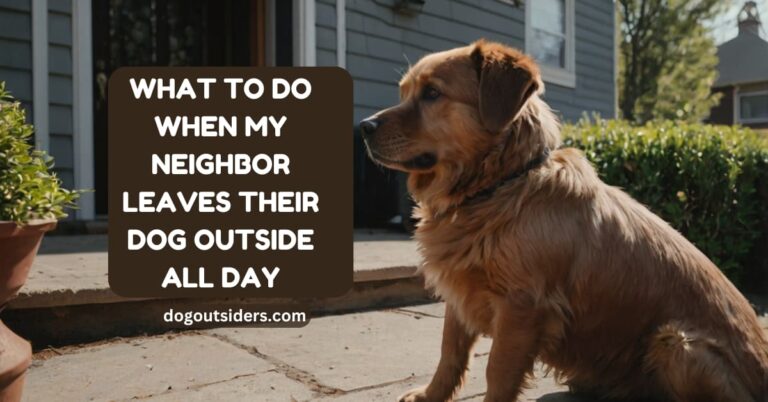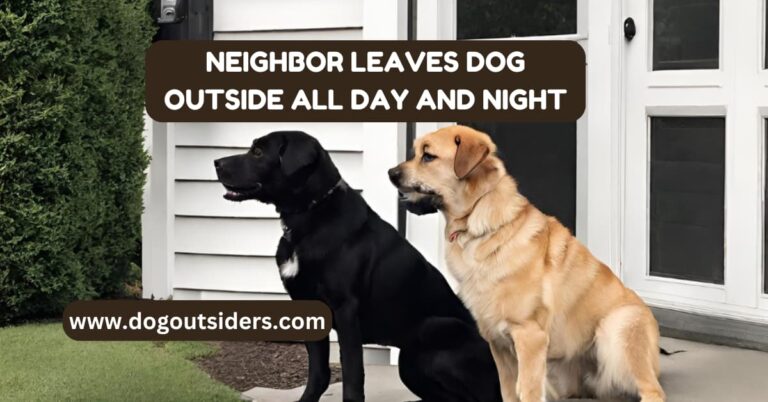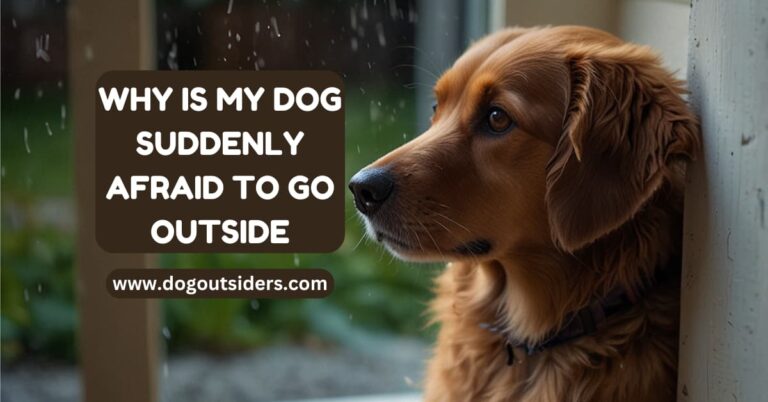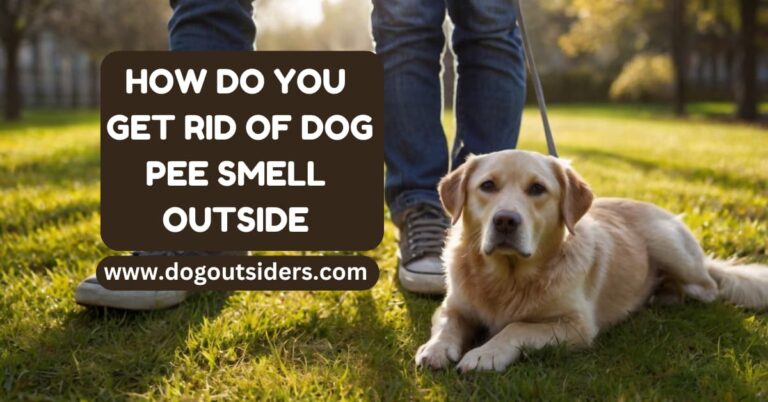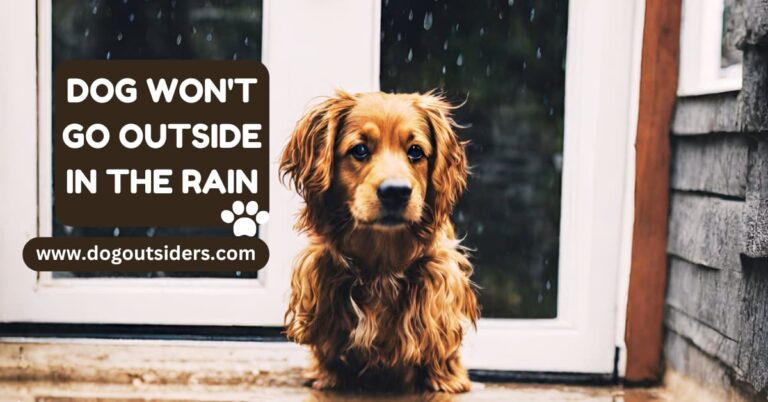what to do when your neighbor leaves dog outside in rain? Picture this: you hear the sad whimpers from next door as the poor neighbors dog gets drenched with concerns. What steps can I take to help the furry friend in need? From offering shelter to contacting animal services, there are ways to ensure the safety and well-being of that neglected pet and address concerns by calling neighbors or a family member. Join me as I share practical tips and advice on how to handle such a situation with care and compassion. Let’s make sure no dog has to endure the storm alone.
Key Takeaways
- Take Action: If you notice a neighbor leaving their dog outside in the rain, call a member of the household by name to address the situation promptly.
- Communicate Carefully: Before approaching your neighbor, gather your thoughts and initiate a respectful conversation to address the issue.
- Avoid Blame: When talking to your neighbor, focus on expressing concern for the dog’s well-being rather than making accusations.
- Know the Rules: Understand the local laws and regulations regarding animal welfare to support your case effectively.
- Document Everything: Keep detailed records and evidence of the neglect, including dates, times, and any visible signs of mistreatment.
- Report Responsibly: If necessary, report the situation to the appropriate authorities, such as animal control or law enforcement, to ensure the dog’s safety.
Recognizing the Issue
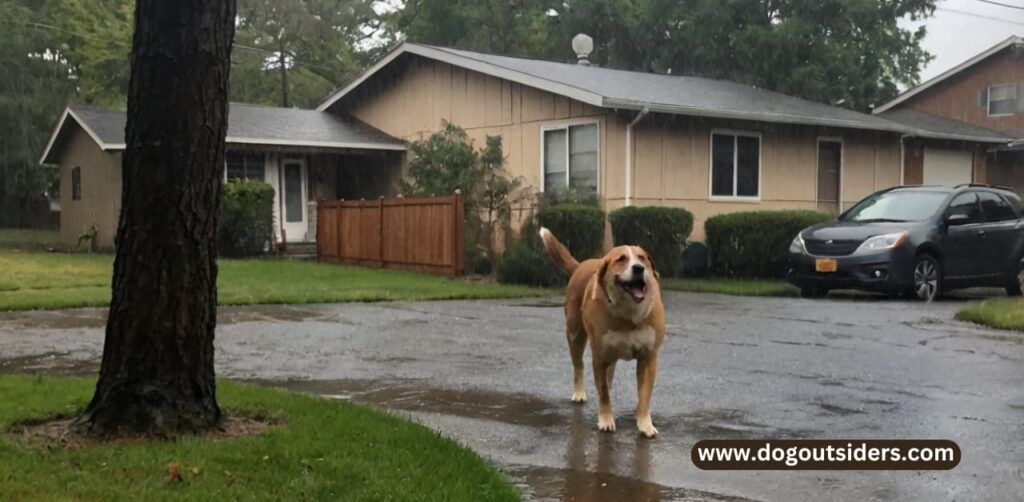
Observing Conditions
From a distance, observe the dog’s living conditions to determine if it is being left outside in the rain. Look for signs of distress or discomfort in the dog’s behavior, such as constant pacing or whining.
Take note of how frequently and for how long the dog is left outside. If you notice that the dog is consistently left outdoors during rainy weather, it may indicate a problem.
Checking for Neglect
Pay attention to any visible signs of neglect, such as matted fur or shivering due to being wet and cold. These are clear indicators that the dog is not receiving proper care and shelter.
Look for any improvements that can be made to ensure the dog’s well-being, such as providing a dry shelter or bringing the dog inside during inclement weather.
Gathering Thoughts Before Acting
Assessing the Situation
Before taking any action, evaluate the situation by observing the dog’s condition and behavior when left outside in the rain. Consider how long the dog is left outside and whether it has adequate shelter.
It’s essential to gather concrete evidence of the issue, such as documenting the times when the neighbor leaves the dog outside in inclement weather. This information will be valuable when addressing the concern with your neighbor.
As I reflect on similar situations I’ve encountered, I find that approaching the neighbor with empathy and understanding can often lead to a more positive resolution. By expressing genuine concern for the well-being of their pet, you may effectively convey the seriousness of the issue without causing conflict.
Planning Your Approach
When preparing to address your neighbor about leaving their dog outside in the rain, plan your approach carefully. Choose a time when both you and your neighbor are calm and have time to discuss the matter peacefully.
Consider discussing potential solutions or offering assistance to ensure that the dog receives proper care and shelter during adverse weather conditions. Suggest practical measures like providing a waterproof shelter or bringing the dog inside during rainy days.
In my experience dealing with similar situations, I’ve found that proposing solutions rather than merely pointing out faults can lead to a more collaborative response from neighbors. By offering support and guidance, you can foster a sense of shared responsibility for animal welfare within your community.
Anticipating Impact
Before taking any action, consider how your approach may impact your relationship with your neighbor and their dog. Approaching the situation delicately can help maintain a positive rapport while addressing the issue effectively.
It’s important to remember that communication is key in resolving conflicts or concerns with neighbors. By initiating an open dialogue with empathy and understanding, you can work towards a solution that benefits both parties involved.
Reflecting on past experiences, I’ve learned that maintaining respectful communication channels with neighbors is crucial for addressing issues constructively. By approaching discussions with a willingness to listen and collaborate, you can nurture positive relationships within your community.
Initiating a Conversation with Your Neighbor
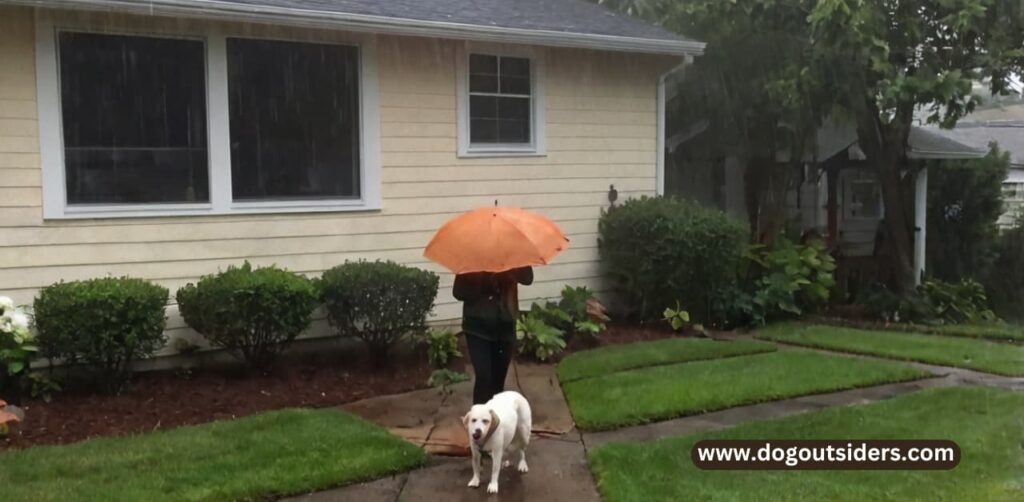
Approach Calmly
Approach your neighbor calmly and respectfully when addressing the issue of leaving the dog outside in the rain. Avoid confrontational tones to ensure a productive conversation.
Express your concerns about the dog’s well-being clearly. Be direct but polite, focusing on the impact of leaving the dog outside in harsh weather conditions.
Listen Actively
Listen actively to your neighbor’s perspective when discussing the situation. Understand their reasons for leaving the dog outside and show empathy towards their point of view.
Be open to dialogue and willing to find a solution together. Suggest alternatives such as creating a sheltered area in the yard for the dog or adjusting the timing for outdoor activities.
Avoiding Accusations
Observing Behavior
When you notice your neighbor leaving their dog outside in the rain, it’s essential to approach the situation with care. Baseless accusations can lead to tension and conflict.
Observing their behavior without jumping to conclusions is crucial. Look for patterns and consistency before addressing the issue.
Initiating a Conversation
Initiating a conversation with your neighbor about the situation requires tact and empathy. Express your concern for the well-being of the dog without placing blame.
Start by sharing your observations calmly and respectfully. Ask if there are reasons behind leaving the dog outside that you may not be aware of.
Seeking Understanding
Seeking mutual understanding is key to resolving the issue amicably. Offer help and support rather than criticism. Suggest alternatives like providing shelter or bringing the dog inside during bad weather.
Approach the conversation with an open mind, aiming to find a solution together that benefits both parties and prioritizes the welfare of the animal.
Understanding the Law
Local Regulations
Local law plays a crucial role in determining the rights and responsibilities of pet owners. It’s essential to research and understand the specific laws in your area regarding leaving dogs outside. These laws typically cover aspects such as shelter, food, water, and overall well-being of outdoor pets.
Shelter Requirements
One key aspect of the law is the requirement for adequate shelter for dogs left outside. This includes protection from extreme weather conditions such as rain, cold temperatures, or excessive heat. Providing a suitable shelter ensures the dog’s safety and comfort, aligning with legal standards.
Food and Water Provision
Another vital component of law regulations is ensuring that outdoor dogs have access to an adequate supply of food and water at all times. Neglecting these basic needs can lead to severe health issues for the animal. Compliance with these regulations is not only a legal obligation but also a moral responsibility.
Documenting Evidence of Neglect

Discreet Documentation
When documenting evidence of neglect, it is crucial to take photos or videos discreetly. Ensure that the dog’s living conditions are clearly captured in the images or footage. By doing so, you can provide concrete visual proof of the situation.
I have found that maintaining a record of dates and times when observing concerning behavior is essential. This log can serve as a detailed account of the neglect over time, reinforcing your case. Noting down specific instances can help establish a pattern of negligence.
Communication with Neighbor
Engaging in interactions with your neighbor about the issue is necessary for addressing the neglect effectively. Keep a record of these conversations, including any responses or actions taken by the neighbor. This information can be valuable when seeking resolution through legal channels.
In my experience, approaching the neighbor with empathy and understanding can lead to more productive discussions. Sharing your concerns in a respectful manner may encourage them to take action and improve the dog’s living conditions. Remember, open communication is key in resolving such situations.
Reporting to Authorities
Contacting Authorities
If you witness a neighbor leaving their dog outside in the rain, take action immediately. Contact animal control or the local authorities to report the situation. Provide them with detailed information about the neglect you have observed.
Providing Evidence
When reporting, it is crucial to provide documented evidence to support your concerns. This can include photos, videos, or written notes detailing the neglectful behavior towards the dog. The more evidence you can provide, the stronger your case will be.
Ensuring Safety
After reporting the incident, follow up with the authorities if necessary to ensure the safety and well-being of the dog. Stay informed about any actions taken by the authorities and continue to advocate for the welfare of the animal. Your actions could potentially save a life.
Identifying Signs of Animal Abuse
Physical Signs
Look for physical signs of malnutrition or untreated injuries on the dog. These can include visible ribs, spine, or bones, as well as patches of missing fur or open wounds. Animal neglect often manifests in these physical symptoms.
Behavioral Cues
Pay attention to the dog’s behavior for signs of fear or aggression. An abused animal may cower away from human contact, show excessive aggression, or exhibit extreme anxiety when approached. These behaviors can indicate past trauma.
Lack of Basic Necessities
Notice if the dog lacks access to basic necessities like food, water, or shelter. A responsible owner ensures their pets have these essentials at all times. If a dog is left outside in the rain without proper shelter, it could be a sign of animal abuse.
When observing a neglected dog, it’s essential to take action promptly. Reporting such cases to animal control or local authorities can prevent further suffering and ensure the safety of the animal. By providing accurate information about the situation, you play a crucial role in protecting innocent creatures.
As an animal lover myself, I understand the importance of advocating for those who cannot speak for themselves. It’s heartbreaking to see animals endure mistreatment due to human negligence. By raising awareness and taking steps to combat animal cruelty, we can make a positive impact on these vulnerable beings.
Remember that our furry friends rely on us for their well-being and safety. If you suspect any form of animal abuse, don’t hesitate to reach out for help. Together, we can create a safer environment for all animals and promote compassion towards every living being.
Addressing Cold Weather Concerns
Shelter and Protection
Ensure adequate shelter is available for the dog to protect it from cold weather conditions. Check if there is a dry and warm place for the dog to stay.
It’s crucial to provide warm bedding or insulation for the dog, especially during rainy and cold days. This will help maintain body heat and keep the dog comfortable.
To address concerns about leaving the dog outside in the rain, consider providing a waterproof kennel or shelter where the dog can seek refuge from harsh weather elements.
Assistance Offered
Offer assistance to your neighbor by discussing ways to improve the dog’s living conditions during inclement weather. Suggest options such as bringing the dog indoors during heavy rain.
Help your neighbor understand the importance of keeping their pet safe from extreme weather conditions. Share information on how exposure to rain and low temperatures can negatively impact the dog’s health.
In addition to providing advice, you can offer practical help by assisting in setting up a designated area inside your neighbor’s home where the dog can stay warm and dry during rainy days.
Conclusion:
After understanding the laws and signs of animal abuse, it’s clear that taking action is crucial. Documenting neglect and reporting it to authorities can make a real difference in protecting animals. Remember, our furry friends rely on us to speak up for them.
Let’s be vigilant in our neighborhoods and stand up against animal cruelty. By working together and staying informed, we can ensure the safety and well-being of all animals in our community.
FAQ’s:
If you notice your neighbor leaving their dog outside in the rain, approach them politely and express your concerns for the dog’s well-being. Offer assistance or suggestions to help them provide better care for their pet.
Stay calm and empathetic during the conversation. Acknowledge their perspective but emphasize the importance of proper care for animals. Suggest seeking advice from a vet or animal welfare organization to ensure the dog’s safety.
Laws regarding leaving pets outside vary by location. Research local animal welfare laws or consult with authorities to understand what constitutes neglect or abuse. Document any evidence of neglect and report it to the appropriate authorities if necessary.
Look out for physical injuries, lack of food or water, poor living conditions, extreme aggression, fearfulness, or other unusual behaviors in animals. Report any suspected cases of animal abuse promptly to prevent further harm.
After reporting an incident of neglect or abuse, follow up with the authorities if needed. Provide any additional information or evidence you may have. Stay vigilant and continue monitoring the situation to ensure the well-being of the animal is prioritized.

